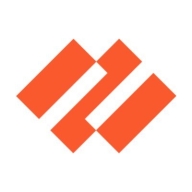
![Threat Stack Cloud Security Platform [EOL] Logo](https://images.peerspot.com/image/upload/c_scale,dpr_3.0,f_auto,q_100,w_64/o0no0it6ybl6satjcxomcblsgmd6.png?_a=BACAGSDL)
Threat Stack Cloud Security Platform [EOL] and Palo Alto Networks Advanced Threat Prevention compete in the field of threat detection and protection. Palo Alto Networks Advanced Threat Prevention is perceived to have an edge due to its comprehensive features.
Features: Threat Stack focuses on cloud threat detection, user workload protection, and security alerts. Palo Alto Networks provides advanced threat analysis, network security, and comprehensive threat intelligence, with strong network defense capabilities.
Room for Improvement: Threat Stack could enhance its integration options, alert management, and cost-effectiveness for larger enterprises. Palo Alto Networks can improve the simplification of its configuration process, reduce its learning curve, and offer more cost-effective solutions for smaller companies.
Ease of Deployment and Customer Service: Threat Stack is known for its easy cloud integration and supportive customer service. Palo Alto Networks requires more extensive setup but offers responsive support, although it can be challenging for new users.
Pricing and ROI: Threat Stack offers competitive pricing with lower deployment costs, resulting in a positive ROI. Palo Alto Networks involves higher initial investment but justifies this through its extensive security capabilities, yielding strong ROI over time.
It offers insights into security threats, despite the inability to quantify its impact in numbers.
Overall, I find the technical support from Palo Alto Networks quite good, although getting a hold of the TAC can be challenging and sometimes requires long phone calls.
I have proof of this rating - when I escalate a case, I receive a reply from TAC support after two days.
I rate technical support from Palo Alto as eight out of ten.
Palo Alto Networks Advanced Threat Prevention is scalable and works well wherever enforcement points exist.
Proper sizing of the firewall models ensures that the system does not experience crippling performance issues.
Palo Alto needs to focus on how to bring that technology to end users and how easy it is to use, especially in a hybrid environment where users work from various locations.
The behavioral detection capabilities could be expanded to address all threats at the perimeter, reducing the reliance on endpoint detection and response systems.
Palo Alto Networks Advanced Threat Prevention requires an add-on license and is considered expensive compared to competitors like Cisco AMP and FortiGate firewalls.
As traditional signature-based mechanisms become less effective due to the evolving nature of attacks, this solution's focus on behavioral analysis is crucial.
We are satisfied with the analytic capabilities of Palo Alto Networks Advanced Threat Prevention, especially the reporting features available in the Palo Alto portal in terms of their application visibility interface, which is very good for us to get visibility on all critical applications and the associated users, as well as the risks associated with every category of traffic.

| Company Size | Count |
|---|---|
| Small Business | 9 |
| Midsize Enterprise | 4 |
| Large Enterprise | 14 |
| Company Size | Count |
|---|---|
| Small Business | 2 |
| Midsize Enterprise | 5 |
| Large Enterprise | 2 |
Palo Alto Networks Advanced Threat Prevention is a cloud-based security service that combines cutting-edge technologies, including machine learning, artificial intelligence, and expert human monitoring, to effectively thwart advanced threats like malware, zero-day attacks, and command-and-control threats. It offers inline protection, scrutinizing all network traffic irrespective of port, protocol, or encryption. An integral component of Palo Alto Networks' security platform, it enjoys widespread adoption across diverse organizations. With its robust security capabilities, it's an ideal choice for entities of all sizes, particularly those in high-risk sectors such as finance, healthcare, and government agencies, seeking to safeguard their networks from a broad spectrum of advanced threats.
Threat Stack Cloud Security Platform [EOL] offers robust security features including endpoint monitoring, rule customization, and integration capabilities, with easy connectivity to cloud services like Docker and AWS.
Threat Stack Cloud Security Platform [EOL] provides tools for enhancing security visibility across cloud infrastructure. It supports AWS and Docker integration, facilitating efficient threat detection and management. Users appreciate its capability to configure customizable alerts and monitor endpoints, sessions, API interactions, and cloud services. However, there are areas needing improvement, such as better serverless environment support and reduced alert frequency. The platform services smaller organizations by compensating for limited security resources with its comprehensive monitoring and auditing tools.
What are the key features?In specific industries, Threat Stack Cloud Security Platform [EOL] is utilized for its strength in monitoring cloud infrastructure and preventing unauthorized access. Organizations in fields where cloud operations are critical use it for regular audits and monitoring. Its capabilities in threat management are leveraged to maintain secure operations and compliance, especially where there is no dedicated security team.
We monitor all Intrusion Detection and Prevention Software (IDPS) reviews to prevent fraudulent reviews and keep review quality high. We do not post reviews by company employees or direct competitors. We validate each review for authenticity via cross-reference with LinkedIn, and personal follow-up with the reviewer when necessary.